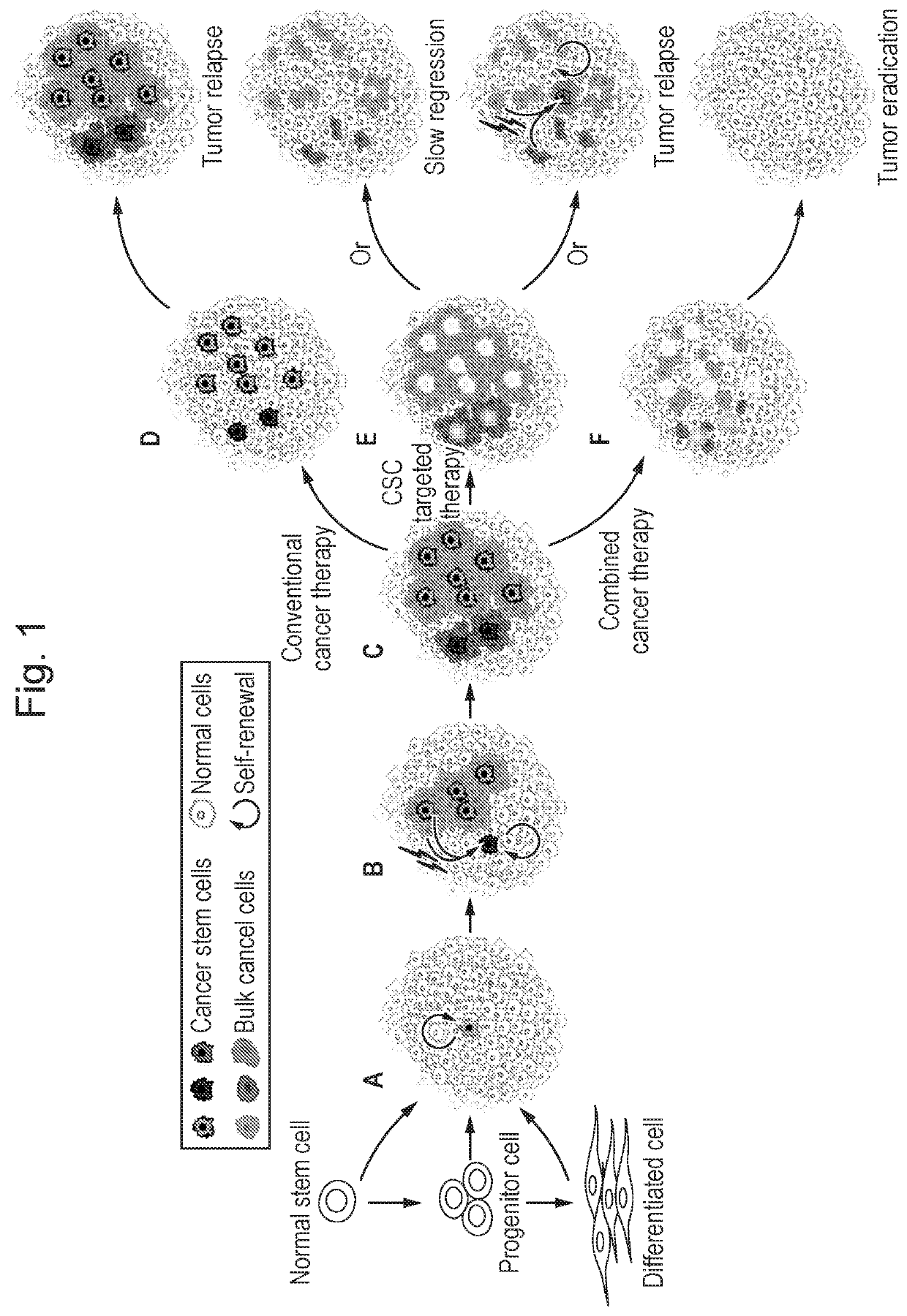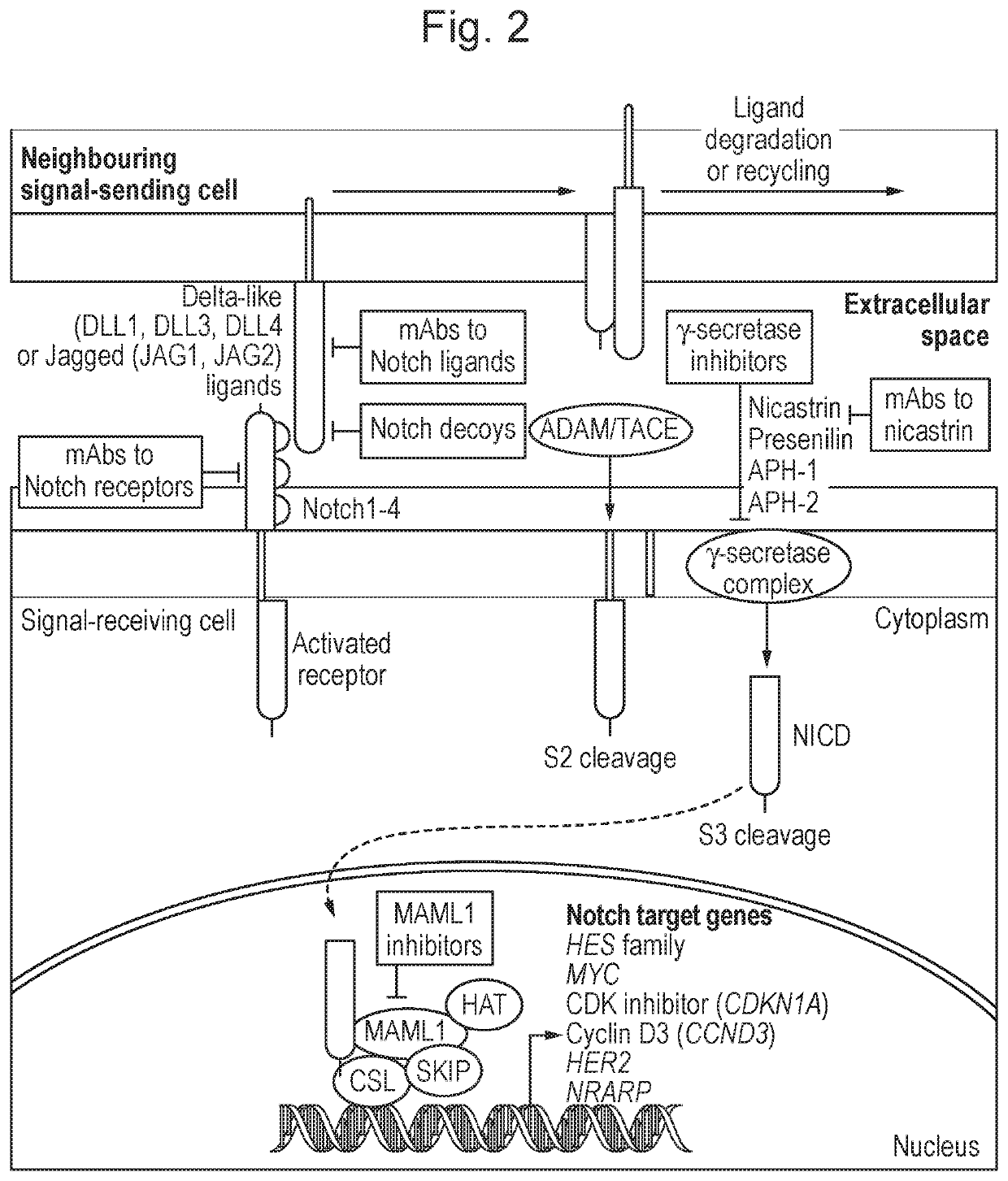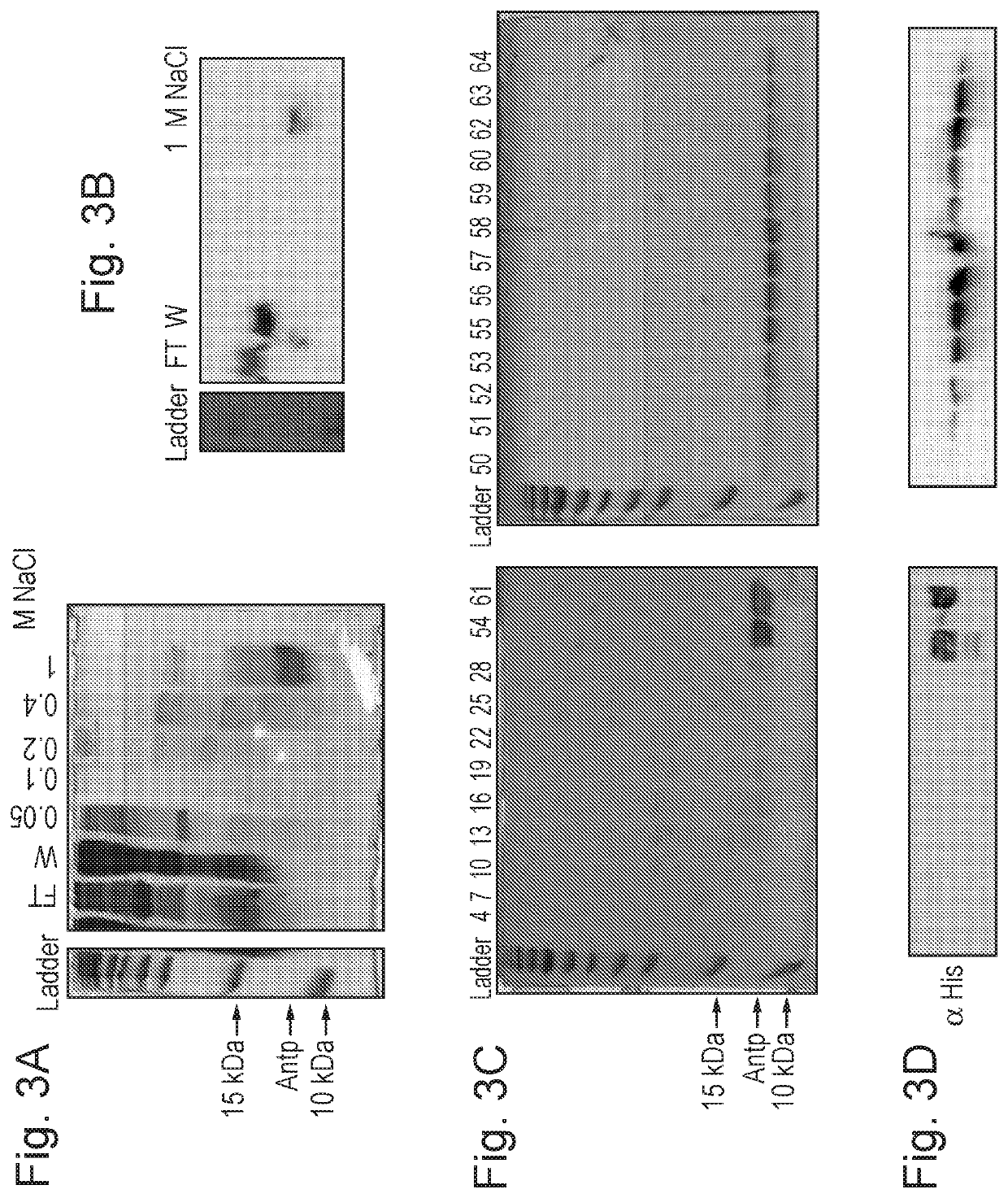Peptide conjugates
a technology of conjugates and peptides, applied in the field of peptide conjugates, can solve the problems of relapse of disease and patient death, poor prognosis and outlook of patient, and inability to eliminate all cancer cells, etc., and achieve the effect of improving solubility and/or in vivo potency
- Summary
- Abstract
- Description
- Claims
- Application Information
AI Technical Summary
Benefits of technology
Problems solved by technology
Method used
Image
Examples
example 1
e Example) Recombinant Production of ANTP-MAML (TR4)
[0210]E. coli cells expressing an ANTP construct (U.S. Pat. No. 8,748,112) was lysed and the ANTP peptide was purified by either cation ion exchange (FIG. 3a) or size exclusion chromatography (FIG. 3c). According to the first method, the cell extract was applied to a cation ion exchange column in 10 mM phosphate buffer (pH 7). The ANTP peptide was gradient eluted with 1M NaCl in 10 mM phosphate buffer (pH 7). Purity was calculated as being at least 80% and yields were in excess of 10 mg / L bacterial culture. When purified using Superdex-75 size exclusion chromatography of the ion exchange, the peptide was at least 95% pure. The identity of the peptides was confirmed using anti-HIS blotting (FIG. 3b and FIG. 3d respectively). The circular dichroism spectrum of purified ANTP was measured between 190 and 270 nm. When dissolved in 10 mM sodium phosphate buffer (pH 7) at a concentration of 1 mg / ml isolated ANTP folds correctly as shown b...
example 2
r Synthesising a Peptide Conjugate Using Solid-Phase Peptide Synthesis
Cesium Salt Method
[0217]The first residue can be attached to a resin using a number of techniques. The methods described below are compatible with the use of a Merrifield resin. Dissolve the carboxylic acid in methanol (5 mL / mmol) and add water (0.5 mL / mmol). Titrate the solution to pH 7.0 with a 20% aqueous solution of cesium carbonate. Evaporate the mixture to dryness. Add DMF (2.5 mL / mmol) and evaporate to dryness (45° C.). Add a second portion of DMF (2.5 mL / mmol) and evaporate to dryness (45° C.). Set up a flask with a heating mantle and thermometer on an orbital shaker. Swell the resin in DMF (6-8 mL per gram of resin). Add the dry carboxylic acid cesium salt (1.0 equivalent based on the chlorine substitution of the resin). The cesium salt must be completely dry to obtain satisfactory results. Shake the mixture at 50° C. for 24 hrs. Filter the resin. Wash the resin thoroughly with DMF, then 50% (v / v) aqueous...
example 3
Production of ANTP-MAML (Syntana-4)
[0232]Syntana-4 (SEQ ID NO:12) was synthesized by SPPS. Unexpectedly the process was high yielding and the peptide conjugate was functional. The full length peptide conjugate was purified by reverse-phase HPLC using an aqueous mobile phase consisting of 0.1% TFA in water, an organic mobile phase consisting of 0.1% TFA in acetonitrile, wherein the proportion of organic buffer was increased from 22-55% over 20 minutes. The eluted conjugate was at least 97% pure. The peptide was subsequently lyophilised and stored at −20° C.
[0233]The conjugate was analysed by mass spectrometry. The expected MW is 16896 and observed was 16982 (FIG. 8) indicating that the correct peptide sequence had been made.
[0234]10 mg of Syntana-4 peptide was dissolved in 7 ml tissue culture grade PBS, gently vortexed and left at 4° C. for 48 hours. This equalled 1 mg / ml of net peptide (70% peptide content). The yield of soluble peptide was greater than 95%. Samples were aliquoted a...
PUM
| Property | Measurement | Unit |
|---|---|---|
| concentration | aaaaa | aaaaa |
| concentration | aaaaa | aaaaa |
| concentration | aaaaa | aaaaa |
Abstract
Description
Claims
Application Information
 Login to View More
Login to View More - R&D
- Intellectual Property
- Life Sciences
- Materials
- Tech Scout
- Unparalleled Data Quality
- Higher Quality Content
- 60% Fewer Hallucinations
Browse by: Latest US Patents, China's latest patents, Technical Efficacy Thesaurus, Application Domain, Technology Topic, Popular Technical Reports.
© 2025 PatSnap. All rights reserved.Legal|Privacy policy|Modern Slavery Act Transparency Statement|Sitemap|About US| Contact US: help@patsnap.com



